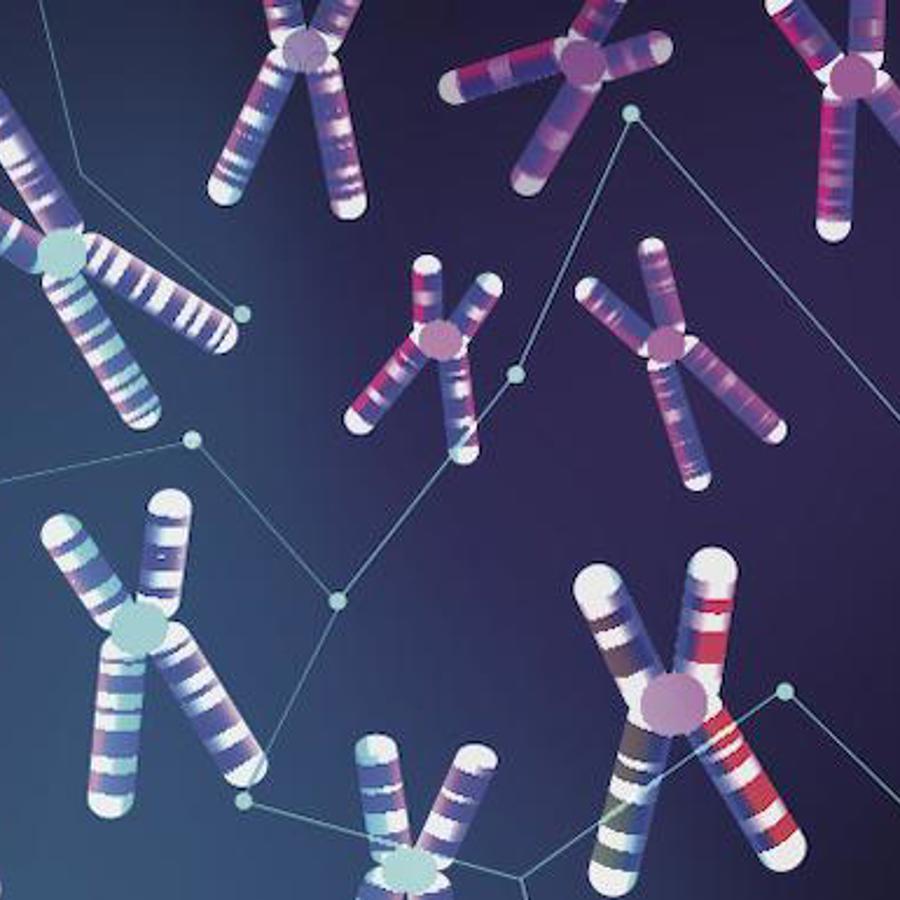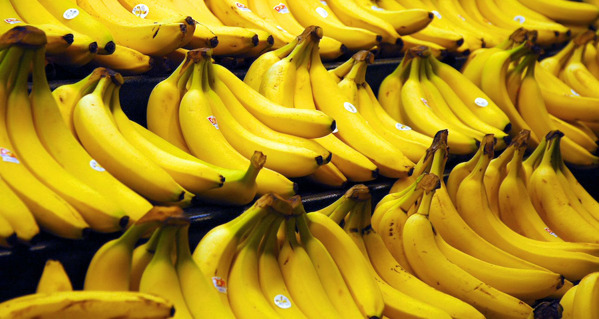
What might cause the number of chromosomes in a species to change?
April 21, 2006

- Related Topics:
- Chromosomes,
- Speciation,
- Evolution
A curious adult from Minnesota asks:
"In a new species, is the chromosome structure of the genome any different? What might cause the number of chromosomes to change? Would this be a mutation during reproduction? Is this something we see with simpler organisms?"
Wonderful questions! They all get at the heart of what it means to be a species. What large-scale changes can happen to DNA? And are they important for making a new species?
These questions cover a wide array of topics. We're going to touch on human evolution and look at how our DNA compares to that of apes. Finally we'll end up at bananas. Yup, bananas.
Biologists consider a species to be a group of animals that look similar and can only breed with each other successfully. DNA changes are one important factor in preventing closely related species from interbreeding.
In fact, it's quite common to see some sort of large-scale change in the genome structure between species. Scientists are still undecided as to how important these DNA changes are in evolution, though.
What can happen to chromosomes in evolution?
Chromosomes are the name scientists give to a strand of DNA in a cell. Humans have 46 chromosomes in most cells. These chromosomes come in pairs, meaning that humans have 23 pairs of chromosomes. We have a pair of chromosome Ones, a pair of chromosome Twos, a pair of chromosome Threes and so on.

We get one of each pair from one parent and one from the other. So your mom gave you one chromosome One, one chromosome Two, and so on. Your dad gave you the other chromosome One, the other chromosome Two and so on.
The structure of the chromosome can change in many ways. Chromosomes can break apart, and they can fuse together. A part of a chromosome can flip around or a part can move to an entirely different chromosome.
These sorts of things happen all the time. For example, some people have their chromosome 21 attached to another of their chromosomes. This doesn't affect them, but it does increase the chance that they will have a child with Down syndrome. A DNA change like this might have helped separate humans from chimpanzees in our distant past.
If you look at the DNA sequence of a chimpanzee, it's 99% similar to us. Yet we look very different!
If we compare the chromosomes of humans and apes, there's one big, noticeable difference. In chimps, apes, and orangutans, chromosome Two seems to have split into two separate chromosomes.
The likeliest explanation is that our primate ancestor had two separate chromosomes. During human evolution those two chromosomes fused to create our chromosome Two.
So what does that mean for evolution? Well, the fact that our chromosome structure is different is one major factor that would keep human and ape species from interbreeding. I'll explain more about that in the next section.

How do chromosome changes happen?
Changes in chromosome structure can be caused by mistakes made during cell division. To make eggs and sperm, cells go through a special process called meiosis.
Meiosis is complicated so it shouldn't be surprising that cells occasionally make a mistake. The egg or sperm can end up with the wrong number of chromosomes. Parts of a chromosome can go missing, a chromosome can be duplicated, or the chromosomes can get rearranged. Some mistake in our past could have happened during meiosis to cause the fusion event.
Sometimes, damage to DNA can cause these changes. For example, it's known that radiation from the sun can cause DNA strands to break. When these breaks are repaired, sometimes the cell makes mistakes and sticks the wrong pieces together.
How do changes in chromosome structure affect evolution?
Let's get back to evolution. One important part of how new species form is that the new and old species can't breed together.
One important part of sexual reproduction is having an even number of chromosomes. Each chromosome having a partner is crucial.
If there are odd numbers of chromosomes or mismatched pieces, there will likely be mistakes during cell division. At the last step of meiosis, one chromosome from each pair moves into the new cells. An odd number of chromosomes means that one chromosome is left unpaired.
If two cells with unequal number of chromosomes fuse together during fertilization, the resulting embryo will have the wrong number of chromosomes, which often leads to sterility or birth defects.
Let's go back to the fact that apes have a split chromosome Two. And we have one big chromosome Two. If a human and ape ancestor were to create an embryo together, the "split" chromosome Two in apes and our big chromosome Two would not be able to pair up properly. The end result would be sterility of the embryo or, more likely, miscarriage.

For an everyday example, take the bananas you buy at the store. These bananas have 3 copies of each chromosome in their cells which makes them seedless.
The bananas can't make any seeds because they have an odd number of chromosomes. During the cell divisions that make seeds, the unpartnered chromosomes cause all kinds of problems. As a result, the seeds die.
It's likely that changes in chromosome numbers or structure are an important part of speciation. For a new species to develop there must be some reproductive barrier. This helps prevent interbreeding with the parent species. Some of those barriers could be changes in chromosome structure.

Author: Dr. David Tran
When this answer was published in 2006, David was a postdoctoral fellow in the Department of Biology, studying the neurobiology of drosophila courtship behavior in Bruce Baker's laboratory. David wrote this answer while participating in the Stanford at The Tech program.
 Skip Navigation
Skip Navigation
